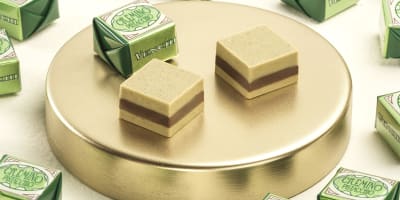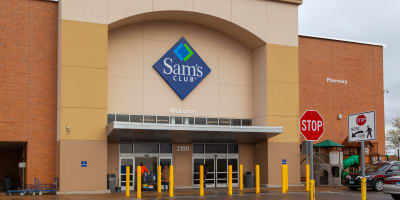Several Buy Buy Baby, Harmon stores to reopen after buyers scored deals on the bankrupt brands

Bed Bath & Beyond may never return to its brick-and-mortar heyday, but the doors at former corporate siblings Buy Buy Baby and Harmon are set to reopen, CNBC has learned.
The group that bought Buy Buy Baby’s intellectual property at a bankruptcy-run auction in June, the owners of baby goods retailer Dream on Me, plans to reopen 11 stores in the Northeast as soon as this fall, Dream on Me’s chief marketing officer, Avish Dahiya, told CNBC.
But the group isn’t stopping there.
It’s setting off on an ambitious plan to return the brand to its glory years, with 100 to 120 stores over the next one to three years, said the marketing chief, who is also an officer on the Buy Buy Baby transition team.
“We definitely see merit in expanding to that number across the U.S.,” Dahiya told CNBC in the company’s first interview since its acquisition. “Similar to what we have done in the Northeast, it will be more cluster-based versus one-off.”
Dahiya added: “We believe omnichannel is critical for the success of the business and stores play a role, so it’s important that we have stores come in sooner than later.”
Meanwhile, private investor Jonah Raskas, who brought the dog-walking app Wag! public through a special purpose acquisition company in 2022, plans to reopen five Harmon stores in the tri-state area of New York, New Jersey and Pennsylvania and potentially more down the line.
“This business never failed. This business was shut down because Bed Bath was failing,” Raskas told CNBC. “We have the luxury of deciding which stores to reopen … we have that ability to focus on the right places at the right time where the customers really want us back again.”
When Bed Bath & Beyond filed for bankruptcy April 23, it repaid its creditors by auctioning off bits and pieces of its broken empire to investors. No one was willing to buy the entire company, but some saw the value of its individual assets — and managed to snag them for a song.
Overstock bought the intellectual property to Bed Bath’s namesake banner for $21.5 million, a price that Bank of America internet analyst Curtis Nagle bluntly described to CNBC as “pretty cheap.” Dream on Me’s owners, meanwhile, have the chance to rebuild Buy Buy Baby after it received its trademark, data and 11 of its store leases for about $16.7 million, far below what the chain could’ve gone for as a going concern. (The new Buy Buy Baby will operate independently from Dream on Me.)
Raskas, on the other hand, snapped up Harmon’s trademark for a mere $300,000 when the chain could’ve once went for $5 million to $10 million, he said.
The new operators of Buy Buy Baby and Harmon have a chance at making something out of the bankrupt businesses, thanks to better balance sheets and less exposure to underperforming locations, according to Neil Saunders, retail analyst and managing director at GlobalData.
“People have picked over the carcass of Bed Bath & Beyond and they’ve managed to get some quite good bargains in terms of the value that they’ve paid for the intellectual property and the business,” he said.
What will the new Buy Buy Baby offer?
When Buy Buy Baby’s doors reopen, shoppers can expect smaller stores, national brands and a focus on experiences, community building and learning, said Dahiya, Dream on Me’s marketing chief.
About 80% of the staff — including the merchant, tech and marketing teams — previously worked at Buy Buy Baby, and the company has tapped Bed Bath veteran Glen Cary to be its chief of stores, Dahiya said. Cary spent about two decades with BB&B, overseeing stores at Buy Buy Baby and Bed Bath’s namesake banner, according to his LinkedIn profile.
The revamped Buy Buy Baby is envisioning registry events and product displays that will allow new parents to meet each other, learn from each other and test out big-ticket items like travel strollers before making a purchase.
A brick-and-mortar footprint is important for the company’s overall strategy because it’ll give it a competitive edge that’ll better differentiate it from mass retailers like Target and Walmart, which would be tougher to do if the business was online only. The big-box stores have leaned heavily into the baby category but they lack the expertise and focus that comes with a specialty store.
″[Mass retailers] have an aisle or two aisles of baby. We have a store of baby. That’s the difference, right?” said Dahiya. “We are very focused on the category we are in.”
When it comes to baby goods, especially higher-priced items that are more technical, consumers need more “hand-holding” that’s better suited for an in-store experience than online, said Melissa Gonzalez, the principal at architecture and design firm MG2 and founder of the Lionesque Group.
“There’s a mix of so much education that’s needed that cannot really be fulfilled online in a way that doesn’t feel overwhelming and intimidating,” Gonzalez told CNBC. “On average, when somebody’s spending like more than, say, $200, then it’s a different price point of consideration where they’re going to need multiple touch points before they can make a decision and on average, there’s not as much comfort to do that online-only.”
Dream on Me has been in the baby business since the 1990s. While its manufacturing capabilities and expertise make it well-suited to compete, busy families need convenience and are already comfortable doing their baby shopping at Walmart and Target. In order to survive this time around, Buy Buy Baby will need to focus on offering a unique value proposition, said Saunders from GlobalData.
“It’s not only Buy Buy Baby that failed. There’s also before it, Babies R Us failed and Toys R Us, which used to have baby stuff, and it failed. So, it’s a difficult model to get right,” said Saunders.
“It really needs to focus on specialism and that means having products that other retailers don’t, having services that other retailers don’t and being renowned for really strong advice and expertise in the baby segment and having really good locations as well.”
What’s next for Harmon?
Raskas, who bought the intellectual property for Harmon, had been a longtime customer of the chain when he heard its 50 stores were shutting down.
Immediately, his curiosity was piqued, and he started doing outreach to a board member to figure out if there was something wrong with the business.
“There was nothing. There was no red flag,” said Raskas, 37, during an interview with CNBC. “The exact line was, ‘There’s so many fires here to put out every single day, it just was something we needed to kind of move past.’”
When Bed Bath declared bankruptcy a few months later and investors began swarming over its namesake banner and Buy Buy Baby, Raskas started asking about Harmon, which had all but gotten lost in the noise.
He learned the company had done about $150 million in sales in 2022, had been profitable every year for the past two decades, and that seven out of every 10 customers who came into the store bought something.
“I went and discussed with my lawyers and we said, ‘OK, what’s the kind of bare minimum bid that we can throw out?’” Raskas recalled. “And that’s what we did.”
With a $300,000 bid, he secured the rights to Harmon’s trademark and plans to reopen five of its best-performing locations in New York and New Jersey hopefully by year-end. More could come down the line, Raskas said.
David Abrams, the founder and CEO of brokerage and advisory firm Masonre, has been advising Raskas and scouting locations for the stores, one of which could open in Manhattan.
“There’s probably no better time to be a tenant,” said Abrams, adding that he’s looking for storefronts with better rents and visibility.
At its heart, Harmon is a drugstore chain that sells a lot of the same products that CVS and Walgreens do, but it earned a cult-like following with its wide assortment, travel-sized products, low prices and its beloved private label Face Values.
Standing outside of a now-shuttered Harmon’s location in New Rochelle, New York, where Raskas and his family used to shop about an hour north of Manhattan, he pressed his face against the glass and recalled what the store was like during better times.
“What stood out was wide aisles, great lighting, the employees were super friendly,” said Raskas. “In today’s age, where a lot of times your in-person shopping experience is just kind of fine, painful or hellish, it was refreshing. I knew I’d get what I need … and I’d get out fast.”
The location, situated at the end of the North Ridge Shopping Center alongside an Italian restaurant and a smoothie shop, was one of Harmon’s bette- performing stores and one Raskas is considering reopening.
Jennifer Kiggins, a trainer at the Rumble Boxing studio a few doors down, can’t wait.
“I think they had really great prices and they had everything you need from like toilet paper and paper towels to sunscreen to makeup, any like random thing,” said Kiggins, 28, who grew up shopping at Harmon with her mom. “I feel like it was always there.”
Luckily, aside from a few optimizations and tweaks, Raskas plans to keep everything the same.
“I’m not just buying a retailer, I’m buying something that was a community-loved favorite store that they went to throughout their entire lifetime and throughout all these different life-cycle journeys. ... That’s why I think this is so exciting,” said Raskas.
“Everyone loves a comeback story and everyone loves to come back to something that they thought was gone and now is back again.”






